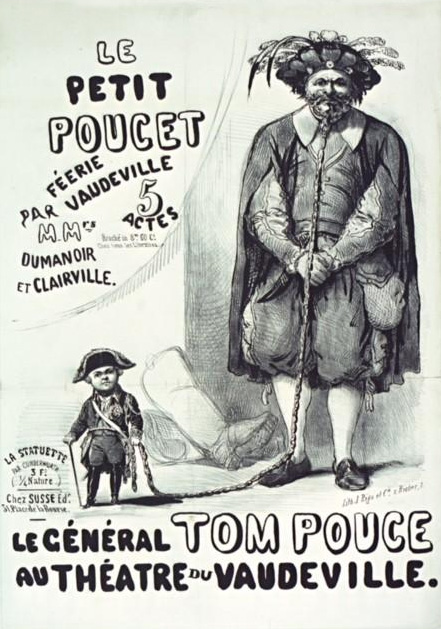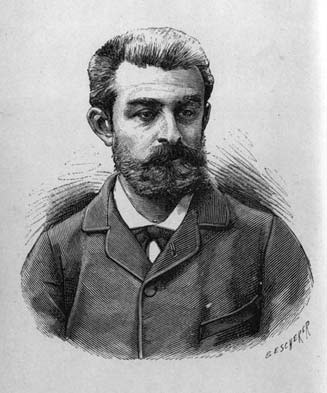|
Paul Siraudin
Pierre-Paul-Désiré Siraudin (18 December 1812 – 8 September 1883) was a French playwright and librettist. He also used the pen names Paul de Siraudin de Sancy, Paul Siraudin de Sancy and M. Malperché. Biography He wrote many plays, mainly comedies and vaudevilles written in collaboration, notably with Alfred Delacour and Lambert-Thiboust. He also authored librettos for successful operettas and opéras-comiques, including ''La fille de Madame Angot'' (1872) in collaboration with Clairville and Victor Koning with music by Charles Lecocq. In 1860, Siraudin opened a confectionery shop — the Maison Siraudin — at the corner of the Rue de la Paix and the Place Vendôme. Siraudin's sweets were "renowned all the world over"; for example, Siraudin's ''Perles des Pyrénées'' ("Pearls of the Pyrenees"), consisting of perfumed sugar, are mentioned in Joris-Karl Huysmans' novel ''À rebours'' (1884). Works * 1842: ''La Vendetta'' with Dumanoir, Théâtre des Variétés ... [...More Info...] [...Related Items...] OR: [Wikipedia] [Google] [Baidu] |
Léon Bienvenu
Léon-Charles Bienvenu (25 March 1835, in Paris – January 1911, in Paris) was a French journalist and writer known for his biting satires on political and social life during the Second French Empire The Second French Empire (; officially the French Empire, ), was the 18-year Empire, Imperial Bonapartist regime of Napoleon III from 14 January 1852 to 27 October 1870, between the French Second Republic, Second and the French Third Republic .... He was also known by his pen-name Touchatout. {{DEFAULTSORT:Touchatout 1835 births 1911 deaths Writers from Paris French caricaturists 19th-century French journalists French male journalists 19th-century French male writers ... [...More Info...] [...Related Items...] OR: [Wikipedia] [Google] [Baidu] |
Charles Lecocq
Alexandre Charles Lecocq (3 June 183224 October 1918) was a French composer, known for his opérettes and opéra comique, opéras comiques. He became the most prominent successor to Jacques Offenbach in this sphere, and enjoyed considerable success in the 1870s and early 1880s, before the changing musical fashions of the late 19th century made his style of composition less popular. His few serious works include the opera ''Plutus (opera), Plutus'' (1886), which was not a success, and the ballet ''Le Cygne (ballet), Le cygne'' (1899). His only piece to survive in the regular modern operatic repertory is his 1872 opéra comique ''La fille de Madame Angot'' (Mme Angot's Daughter). Others of his more than forty stage works receive occasional revivals. After study at the Conservatoire de Paris, Paris Conservatoire, Lecocq shared the first prize with Georges Bizet in an operetta-writing contest organised in 1856 by Offenbach. Lecocq's next successful composition was an opéra-bouffe, ... [...More Info...] [...Related Items...] OR: [Wikipedia] [Google] [Baidu] |
Lubize
Lubize, real name Pierre-Michel Martin or Martin-Lubize (21 February 1798 (3 ventôse an VI) registre des naissances de l'an VI pour la ville de Bayonne, Archives départementales des Pyrénées-Atlantiques. – 28 January 1863 Acte n°125 () registre des décès de l'année 1863 pour le 9e arrondissement, Archives numérisées de la Ville de Paris.) was a 19th-century French |
Eugène Labiche
Eugene is a common male given name that comes from the Greek εὐγενής (''eugenēs''), "noble", literally "well-born", from εὖ (''eu''), "well" and γένος (''genos''), "race, stock, kin". Henry George Liddell, Robert Scott, ''A Greek-English Lexicon'', on Perseus Gene is a common shortened form. The feminine variant is or Eugenie. , a common given name in parts of central and northern Europe, is also a variant of Eugene / Eugine. Other male foreign-language variants in ... [...More Info...] [...Related Items...] OR: [Wikipedia] [Google] [Baidu] |
Théâtre De La Gaîté (boulevard Du Temple)
The Théâtre de la Gaîté, a former Parisian theatre company, was founded in 1759 on the boulevard du Temple by the celebrated Parisian fair-grounds showman Jean-Baptiste Nicolet as the Théâtre de Nicolet, ou des Grands Danseurs.McCormick 1993, p. 16.Whittaker 1827vol. 2, p. 520 The company was invited to perform for the royal court of Louis XV in 1772 and thereafter took the name of Grands-Danseurs du Roi. However, with the fall of the monarchy and the founding of the First French Republic in 1792, the name was changed to the less politically risky Théâtre de la Gaîté."Grands-Danseurs du Roi (Spectacle des)" in Campardon 1877vol. 1, p. 384 The company's theatre on the boulevard du Temple was replaced in 1764 and 1808, and again in 1835 due to a fire. As a result of Haussmann's renovation of Paris, the company relocated to a new theatre on the rue Papin in 1862, and the 1835 theatre (pictured) was subsequently demolished. Nicolet moves from the fair to the boulevard In ... [...More Info...] [...Related Items...] OR: [Wikipedia] [Google] [Baidu] |
Comédie En Vaudevilles
The ''comédie en vaudevilles'' () was a theatrical entertainment which began in Paris towards the end of the 17th century, in which comedy was enlivened through lyrics using the melody of popular vaudeville (song), vaudeville songs.Barnes 2001. Evolution The annual fairs of Paris at St. Germain and St. Laurent had developed theatrical variety entertainments, with mixed plays, acrobatics, acrobatic displays, and pantomimes, typically featuring vaudevilles (see Théâtre de la foire). Gradually these features began to invade established theatres. The ''Querelle des Bouffons'' (War of the Clowns), a dispute amongst theatrical factions in Paris in the 1750s, in part reflects the rivalry of this form, as it evolved into ''opéra comique'', with the Italian ''opera buffa''. ''Comédie en vaudevilles'' also seems to have influenced the English ballad opera and the German Singspiel. Vaudeville final One feature of the ''comédie en vaudevilles'' which later found its way into opera w ... [...More Info...] [...Related Items...] OR: [Wikipedia] [Google] [Baidu] |
Théâtre Du Palais-Royal
The Théâtre du Palais-Royal () is a 750-seat Parisian theatre at 38 rue de Montpensier, located at the northwest corner of the Palais-Royal in the Galerie de Montpensier at its intersection with the Galerie de Beaujolais. Brief history Originally known as the Théâtre des Beaujolais, it was a puppet theatre with a capacity of about 750 that was built in 1784 to the designs of the architect Victor Louis. In 1790 it was taken over by Mademoiselle Montansier and became known as the Théâtre Montansier. She began using it for plays and Italian operas translated into French and the following year hired Louis to enlarge the stage and auditorium, increasing its capacity to 1300. After Napoleon's decree on the theatres in 1807 introduced significant constraints on the types of pieces that could be performed, it was used for lighter fare, such as acrobatics, rope dancing, performing dogs, and Neapolitan puppets. In 1812 the theatre was converted into a café with shows. Afte ... [...More Info...] [...Related Items...] OR: [Wikipedia] [Google] [Baidu] |
Théâtre Des Variétés
The Théâtre des Variétés is a theatre and "salle de spectacles" at 7–8, boulevard Montmartre, 2nd arrondissement, in Paris. It was declared a monument historique in 1974. History It owes its creation to the theatre director Mademoiselle Montansier (Marguerite Brunet). Imprisoned for debt in 1803 and frowned upon by the government, a decree of 1806 ordered her company to leave the Théâtre du Palais-Royal which then bore the name of "Variétés". The decree's aim was to move out Montansier's troupe to make room for the company from the neighbouring Théâtre-Français, which had stayed empty even as the Variétés-Montansier had enjoyed immense public favour. Strongly unhappy about having to leave the theatre by 1 January 1807, the 77-year-old Montansier gained an audience with Napoleon himself and received his help and protection. She thus reunited the "Société des Cinq", which directed her troupe, in order to found a new theatre, the one which stands at the side of t ... [...More Info...] [...Related Items...] OR: [Wikipedia] [Google] [Baidu] |
Dumanoir
Philippe François Pinel, known as Dumanoir (31 July 1806 – 16 November 1865), was a French playwright and librettist. Biography Dumanoir was born in Capesterre-Belle-Eau, Guadeloupe. He was the son of Mrs. Pinel-Dumanoir, whose family planted the palm trees lining the ''Allée Dumanoir'' in Guadeloupe. He left Guadeloupe in 1816. Dumanoir wrote in the theatrical genre of Comédie en vaudevilles. He was director of the Théâtre des Variétés from 1837 to 1839. In 1844, he wrote in collaboration with Adolphe d'Ennery, an eponymous drama about Don César de Bazan, one of the characters in ''Ruy Blas'' by Victor Hugo. He died in Pau. List of major works Plays * 1842: ''Le Chevalier d'Éon'', comedy in 3 acts, (with Jean-François Bayard), Théâtre des Variétés * 1839: ''Les Premières Armes de Richelieu'' (with Jean-François Bayard), Théâtre du Palais Royal * 1840: ''Indiana et Charlemagne'' (with Jean-François Bayard), Théâtre du Palais Royal * 1842: ''Ma ma� ... [...More Info...] [...Related Items...] OR: [Wikipedia] [Google] [Baidu] |
À Rebours
''À rebours'' (; translated ''Against Nature'' or ''Against the Grain'') is an 1884 novel by the French writer Joris-Karl Huysmans. The narrative centers on a single character: Jean des Esseintes, an eccentric, reclusive, ailing aesthete. The last scion of an aristocratic family, Des Esseintes loathes nineteenth-century bourgeois society and tries to retreat into an ideal artistic world of his own creation. The narrative is almost entirely a catalogue of the neurotic Des Esseintes's aesthetic tastes, musings on literature, painting, and religion, and hyperaesthesic sensory experiences. ''À rebours'' contains many themes that became associated with the Symbolist aesthetic. In doing so, it broke from Naturalism and became the ultimate example of "Decadent" literature, inspiring works such as Oscar Wilde's ''The Picture of Dorian Gray'' (1890). In his preface for the 1903 publication of the novel, Huysmans wrote that he had the idea to portray a man "soaring upwards into dream ... [...More Info...] [...Related Items...] OR: [Wikipedia] [Google] [Baidu] |
Joris-Karl Huysmans
Charles-Marie-Georges Huysmans (, ; 5 February 1848 – 12 May 1907) was a French novelist and art critic who published his works as Joris-Karl Huysmans (, variably abbreviated as J. K. or J.-K.). He is most famous for the novel ''À rebours'' (1884, published in English as ''Against the Grain'' and as ''Against Nature''). He supported himself by way of a 30-year career in the French civil service. Huysmans's work is considered remarkable for its idiosyncratic use of the French language, large vocabulary, descriptions, satirical wit and far-ranging erudition. First considered part of Naturalism, he became associated with the decadent movement with his publication of ''À rebours.'' His work expressed his deep pessimism, which had led him to the philosophy of Arthur Schopenhauer. In later years, his novels reflected his study of Catholicism, religious conversion, and becoming an oblate. He discussed the iconography of Christian architecture at length in '' La cathédral ... [...More Info...] [...Related Items...] OR: [Wikipedia] [Google] [Baidu] |
.jpg)




